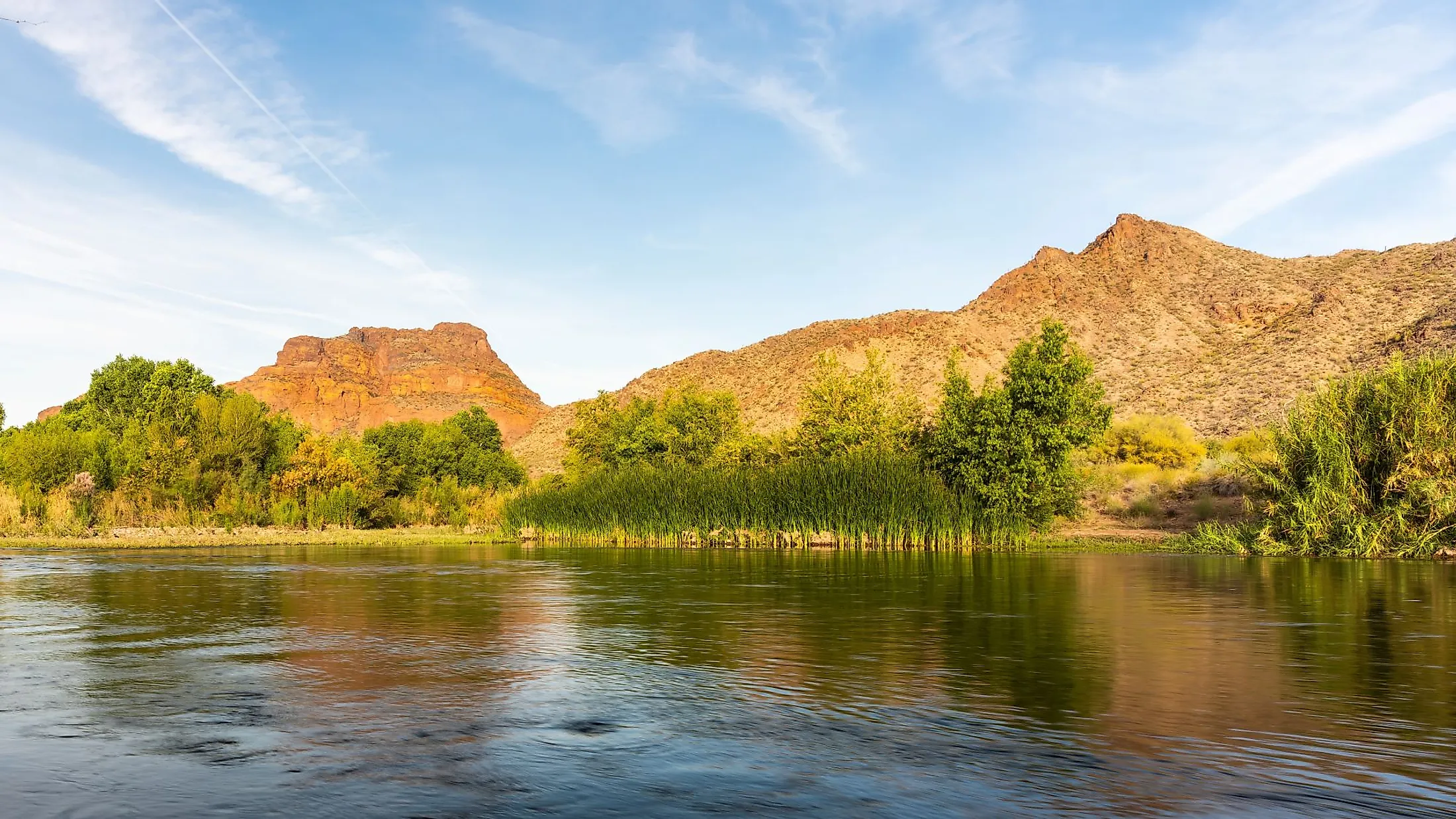
Salt River, Arizona
The Salt River, which is Gila River's biggest tributary, flows through Gila and Maricopa counties in the east-central portion of the US State of Arizona. For thousands of years, the Greater Phoenix area's population has used Arizona's renowned Salt River as a place for innovation and entertainment. Because of canals, pipelines, and reservoirs, the 320 km long Salt River provides a significant portion of the water supply for Greater Phoenix. These reservoirs include Saguaro, Canyon, Apache, and Roosevelt Lakes. About 40 minutes outside of Phoenix's downtown lies Mesa, where the most popular section of the river (formerly known as the Lower Salt River) can be found.
Course Of The Salt River
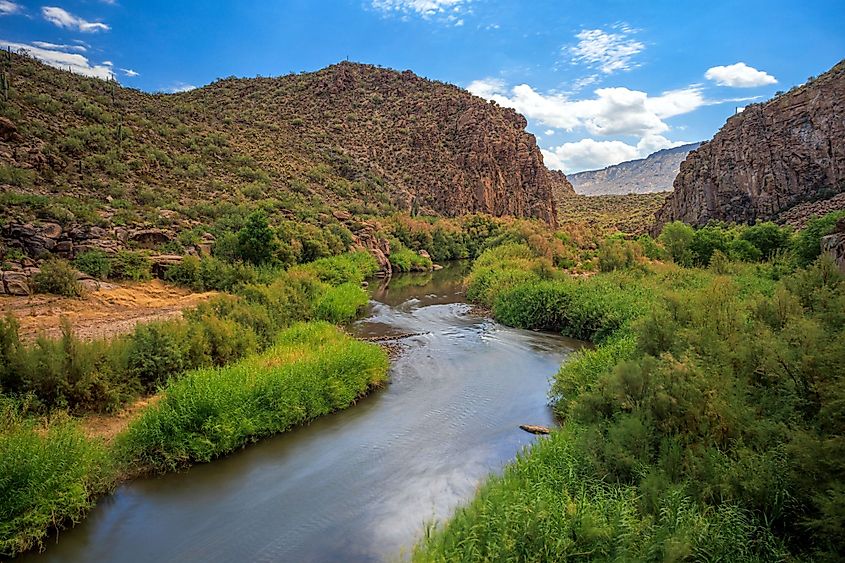
The Upper Salt River, which originates at the confluence of the Black and White rivers in the White Mountains, forges a spectacular course through a rough terrain and juniper- and boulder-strewn high desert before flowing into Roosevelt Lake, the anchor reservoir of a water reclamation system that enables citizens to survive in the desert. The river then continues on its natural course into the Lower Salt Basin in the direction of Apache, Canyon, and Saguaro lakes, where it joins the Verde River and enters the canal network.
A few miles below the Verde River confluence, the Salt River approaches the eastern boundary of the larger Phoenix metropolitan area. The Granite Reef Diversion Dam directs all the remaining water in the Salt River into the Arizona Canal and Southern Canal, which provide drinking and agricultural water to a large portion of the Phoenix metropolitan area, less than half a mile from the border of the national forest. The Salt River emerges from the mountains below Granite Reef Dam, passing through Mesa, Tempe, and Scottsdale before flowing south of downtown Phoenix and north of South Mountain Park. About 15 miles southwest of Phoenix, the Salt River empties into the Gila River.
History Of Salt River
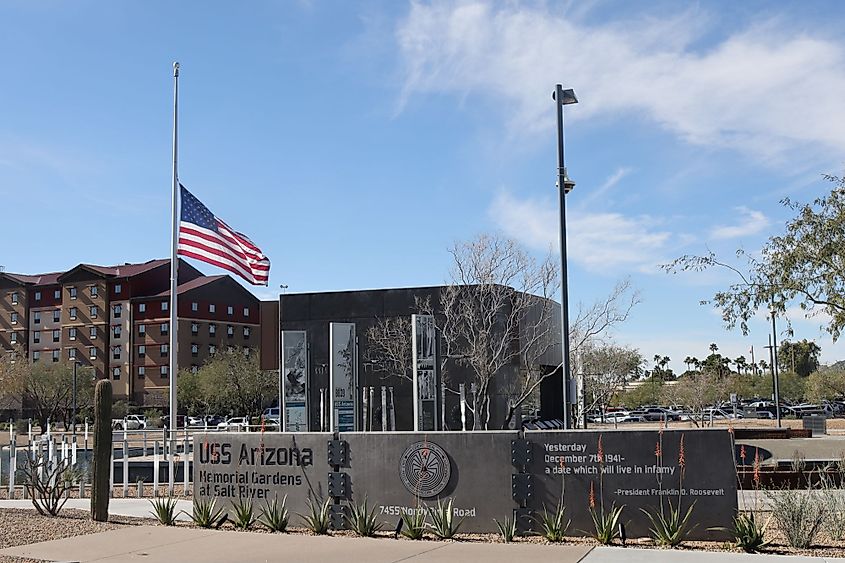
Both the Salado and the Hohokam cultures formerly thrived along the river. The Akimel O'odham often referred to as the Pima people, resided alongside the Salt River and carved irrigation canals to supply water to their crops and communities in the desert environment. The Ro Salado was the name given to the river by the New Spanish government. Through an executive order signed by President Rutherford B. Hayes, the US government acknowledged the Pima people's land. President Hayes then issued an executive order that lowered the Salt River part of the reserve's size from around 680,000 acres to 46,627 acres. The Salt River Pima-Maricopa Indian Community still practices its ancient customs and way of life today as they dwell next to the Salt River's bank.
Ecology Of Salt River
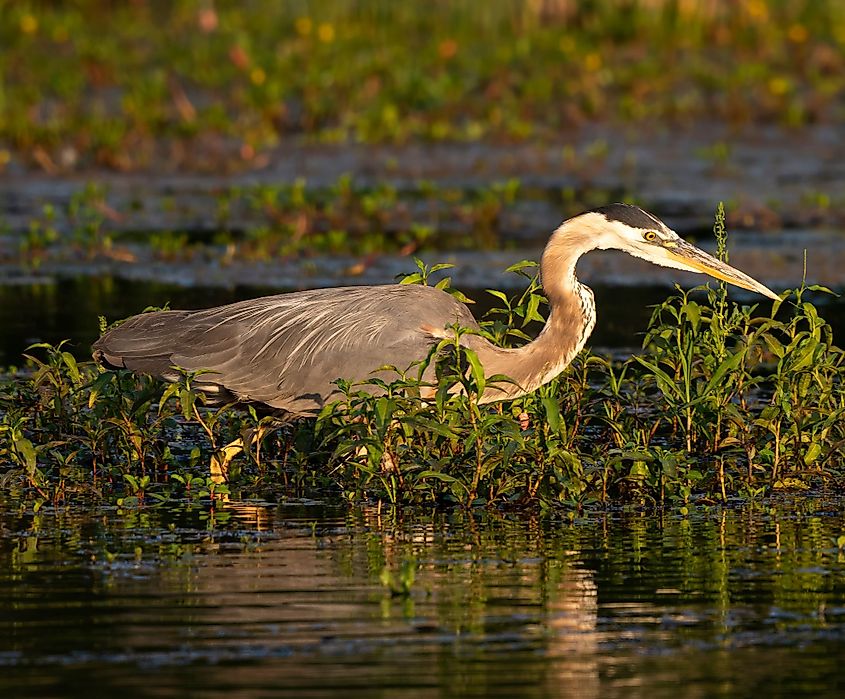
It's common to observe bald eagles, ospreys, Harris's hawks, peregrine falcons, herons, egrets, ducks, and several other riparian and upland species along the river. Numerous migratory songbird species, including Bell's vireo, Lucy's warbler, black-chinned, and Costa's hummingbirds, vermilion and ash-throated flycatchers, and hooded oriole, also visit the area to nest in the spring. Mistletoe clusters among the cottonwood and mesquite trees draw a variety of wintering birds, including the phainopepla, northern mockingbird, western bluebird, American robin, and cedar waxwing, who eat the plentiful berries.
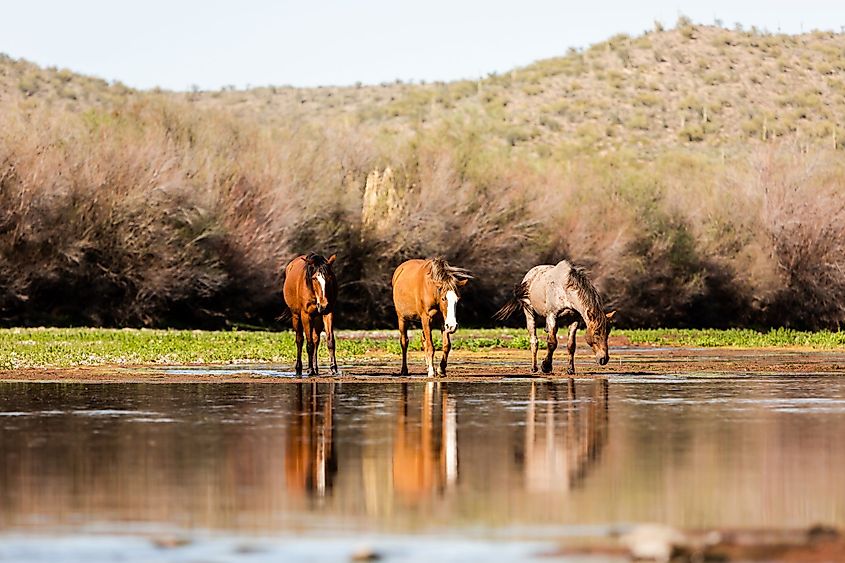
Depending on the time of day, bighorn sheep, deer, javelina, coyotes, fox, bobcats, raccoons, skunks, and other creatures may be observed on the hillsides or approaching water. River otters can occasionally be observed swimming in the river or along the riverside. The most prevalent lizards, snakes, and toads in the region include the desert spiny and zebra-tailed lizards, gopher snake, coachwhip, western diamond-backed rattlesnake, and Woodhouse's toad.
Fishing In Salt River
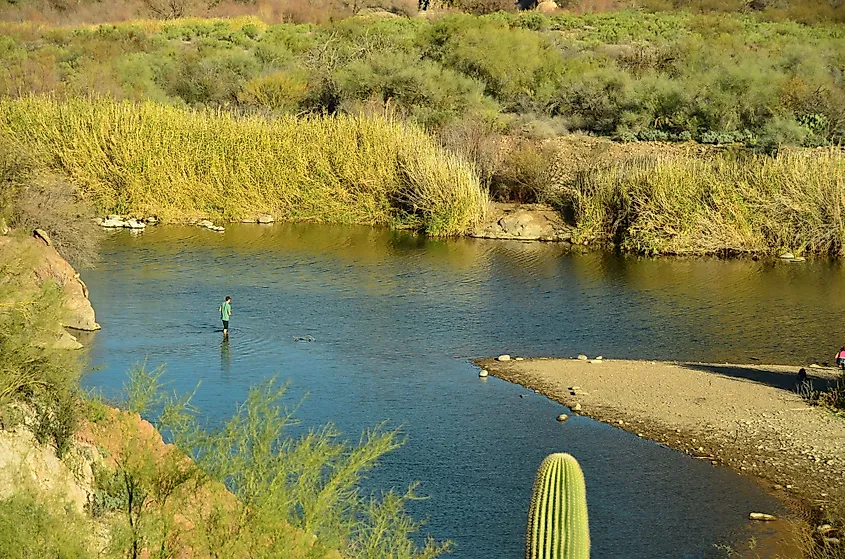
Trout fishing on the Salt River below Saguaro Lake is one of the most underrated fishing opportunities in this region. One can also find rainbow trout, largemouth bass, sunfish, and catfish. Here, people take advantage of the year-round trout fishery. The AZ Game And Fish Department provide information about fishing in this region.
Recreation In Salt River
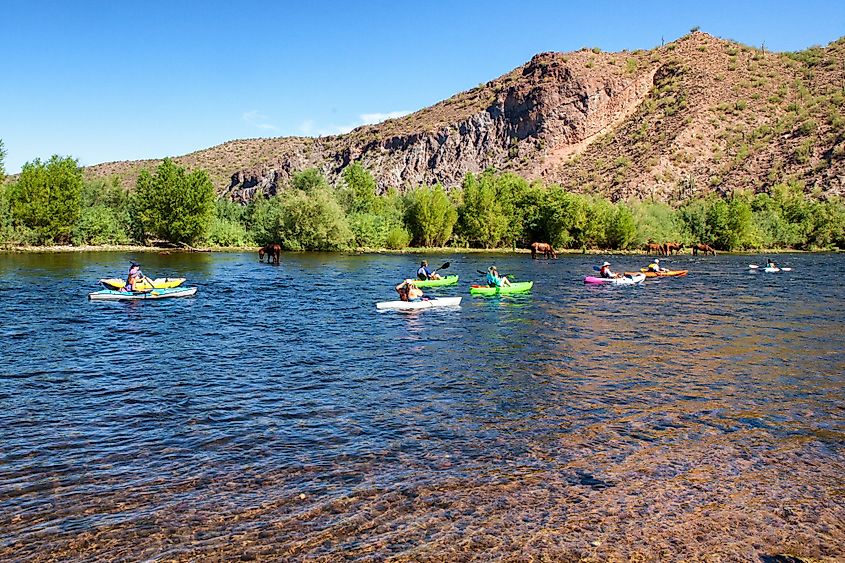
Visitors typically use the river and its environs for activities like tubing, kayaking, fishing, hiking, and camping. While tubing attracts the bulk of river visitors, kayaking and stand-up paddleboarding are popular activities along the Lower Salt River. The river is ideal for both expert and inexperienced paddlers since one can just let the river's current gently guide them downstream while taking in the scenery. As if the Lower Salt River's breathtaking surroundings weren't stunning enough, the wild horses, often known as mustangs, that live there are one of the river's most astounding views throughout an 18-mile length. One can readily notice the horses throughout one's journey since they graze along the riverbank where many tourists kayak and tube.











